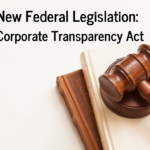The Small Business Administration (SBA) and U.S. Treasury Department have released new FAQ guidance concerning various forgiveness aspects of Paycheck Protection Program (PPP) loans, provided for under the Coronavirus Aid, Relief, and Economic Security Act (CARES Act) and amended by the Paycheck Protection Program Flexibility Act (Flexibility Act). The new FAQ guidance addresses questions on repayment timelines, forgiveness reductions, payroll and non-payroll costs, and key considerations for small businesses looking to spend PPP funds efficiently.
Paycheck Protection Program FAQ Highlights
General Forgiveness
- Borrowers who submit loan forgiveness applications within 10 months of the expiration of their Covered Period* are not required to make payments until the SBA remits the forgiveness amount.
- Borrowers will not be responsible for accrued interest for loans that are fully forgiven.
- Lenders are responsible for notifying borrowers of the SBA’s remittance amount and the first payment’s due date.
- Sole proprietors, independent contractors, and self-employed individuals who had no employees at the time of their PPP loan application and did not include any employee salaries in their monthly payroll calculation are automatically qualified to use the PPP Loan Forgiveness Application Form 3508EZ.
- Lenders may accept scanned and electronically signed copies of forgiveness applications.
Payroll Costs and Forgiveness
- Payroll costs incurred during the borrower’s Covered Period but paid after the Covered Period are eligible for forgiveness if paid on or before the next regular payroll date.
- Payroll costs incurred before the borrower’s Covered Period but paid during the Covered Period are eligible for forgiveness.
- Borrowers using a biweekly or more frequent payroll system may elect to calculate eligible payroll costs using an 8-week Covered Period (for loans received before June 5, 2020) or an Alternative Payroll Covered Period** spanning 24 weeks beginning on the first day of the first payroll following the loan’s disbursement date.
- Borrowers who pay employees twice a month or less frequently must calculate payroll costs for partial pay periods.
- When calculating cash compensation, borrowers should use the gross amount before deductions for taxes, employee benefits payments, and similar payments – not the net amount paid to employees.
- Payroll costs eligible for forgiveness include all forms of cash compensation, including tips, commissions, bonuses, and hazard pay with a $100,000 annualized limit per employee.
- Expenses for employee group health care benefits paid or incurred by the borrower during the Covered Period are eligible for loan forgiveness.
- Group health care or retirement benefits accelerated from outside of the Covered Period timeline, and portions of health or retirement benefits paid by employees or beneficiaries, are not eligible for forgiveness.
- Compensation for owners working at more than one borrower company is capped across all businesses he or she owns at $20,833 if a 24-week forgiveness period is chosen ($15,385 for borrowers that received a PPP loan before June 5, 2020, and opted for an 8-week Covered Period). If total compensation across borrower businesses exceeds the cap, owners can choose how to allocate the capped amount across the borrower businesses.***
Non-Payroll Costs and Forgiveness
- Eligible business mortgage interest costs, rent or lease costs, and utility costs incurred prior to but paid during the borrower’s Covered Period are eligible for forgiveness.
- Eligible non-payroll costs incurred during the Covered Period and paid on or before the next regular billing date are eligible for forgiveness, even if paid after the Covered Period.
- If a borrower opts for an Alternative Payroll Covered Period for payroll costs, the regular Covered Period will apply to non-payroll costs instead of the Alternative Payroll Covered Period.
- Interest on unsecured credit is not eligible for forgiveness, but interest on unsecured credit incurred before February 15, 2020, is a permissible use of loan proceeds.
- Renewed leases or refinanced mortgage payments are eligible for forgiveness if existing prior to February 15, 2020, and renewed or refinanced during the Covered Period.
Understanding PPP loan spending and forgiveness requirements should remain a top priority both for current borrowers and businesses looking to participate in future extensions of the Paycheck Protection Program. Please contact your KDDK attorney or any member of the KDDK business law team for additional information and guidance on the CARES Act or any related matter.
NOTES:
*The PPP Covered Period is either (1) the 24-week period beginning on the disbursement date of the PPP loan or (2) the 8-week period following the loan’s disbursement date (if the borrower received the loan before June 5, 2020).
**The PPP Loan Forgiveness Application allows for an alternative, 8-week period beginning on the first day of the first pay period following the loan disbursement date. This allows borrowers to calculate payroll expenses in sync with their business payroll cycles.
***SBA Guidance addressing owner compensation depends on multiple factors not addressed in this summary, such as type of business entity, equity ownership percentage, and previous tax filings. Please review the official FAQ guidance (question 8, beginning on page 4) for comprehensive explanations and examples:




